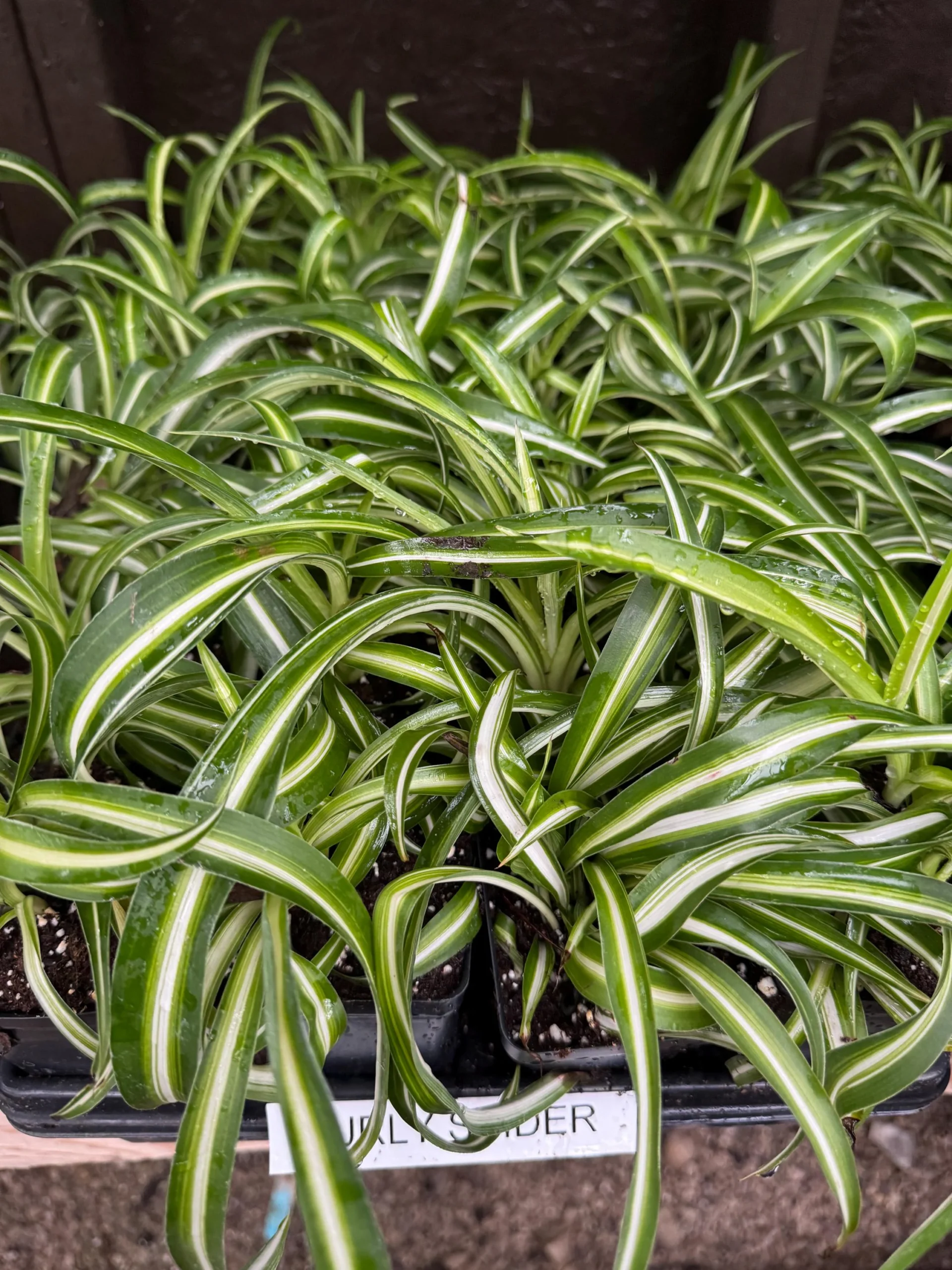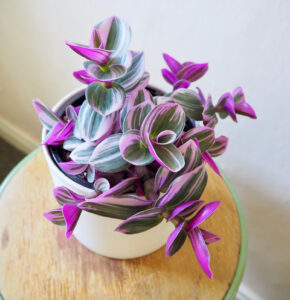The Spider Plant (Chlorophytum comosum) is one of the most popular and easy-to-grow houseplants, cherished for its graceful, arching foliage and baby plantlets that dangle like spiders on a web. Native to tropical and southern Africa, spider plants have become a staple in homes, offices, and classrooms around the world due to their adaptability, low maintenance, and air-purifying qualities.
Whether you’re a seasoned plant enthusiast or a beginner, this guide will walk you through everything you need to know to keep your spider plant happy and thriving.
1. Light Requirements
Spider plants are highly adaptable when it comes to light, making them perfect for various indoor environments.
- Ideal Lighting: Bright, indirect light is best. Place them near a north or east-facing window or in a spot where they get filtered sunlight.
- Too Much Sun: Direct sunlight, especially through glass, can scorch their leaves and cause browning.
- Low Light: While spider plants tolerate lower light conditions, they may grow more slowly and lose some vibrancy in color.
If your spider plant starts to look pale or its growth stalls, try moving it to a brighter location.
2. Watering
Spider plants prefer to be kept slightly moist but not soggy.
- Frequency: Water once a week in spring and summer when the plant is actively growing. During fall and winter, reduce watering to once every 10–14 days.
- How to Water: Water thoroughly until it drains from the bottom of the pot. Allow the top inch of soil to dry out between waterings.
- Water Quality: Spider plants are sensitive to chemicals like fluoride and chlorine. Use distilled water or let tap water sit out overnight before watering to allow chemicals to dissipate.
Signs of improper watering:
- Brown tips may indicate overwatering, underwatering, or sensitivity to tap water.
- Yellow leaves can suggest overwatering or root rot.
3. Soil and Potting
Spider plants thrive in well-draining soil and don’t require anything too fancy.
- Best Soil: A standard indoor potting mix is sufficient. You can improve drainage by adding perlite or pumice.
- Potting Tips: Ensure the pot has drainage holes. Spider plants don’t like to sit in water, which can lead to root rot.
- Repotting: These plants like being slightly root-bound, so repot only every 1–2 years or when roots start growing out of the drainage holes.
When repotting, choose a pot that’s just one size larger than the current one.
4. Temperature and Humidity
Spider plants are hardy but still prefer stable indoor conditions.
- Temperature Range: Ideal temperatures are between 65–75°F (18–24°C). They can tolerate short periods of cooler temps but should be kept above 50°F (10°C).
- Humidity: Spider plants do well in average household humidity. In dry climates or during winter (when indoor air is drier), occasional misting or a humidity tray can help prevent brown tips.
Avoid placing your plant near heating or cooling vents, as drafts can stress the plant.
5. Fertilization
Feeding your spider plant can encourage vibrant growth and the production of plantlets (baby spider plants).
- Type of Fertilizer: Use a balanced, water-soluble houseplant fertilizer (e.g., 10-10-10 or 20-20-20).
- Frequency: Fertilize once a month during the growing season (spring and summer). Skip feeding in fall and winter when growth slows.
Too much fertilizer can lead to salt build-up in the soil, which may cause leaf tip burn. If you notice white crusts on the soil, flush the pot with water to wash out excess salts.
6. Propagation
One of the joys of growing spider plants is how easily they reproduce.
- Plantlets: Mature spider plants produce “babies” or offsets on long stems.
- Propagation Method:
- Wait until the baby plant has small roots (usually visible).
- Cut it off and place it in water or directly into soil.
- If rooting in water, transplant to soil once roots are an inch long.
- Keep the new plant in bright, indirect light and slightly moist soil until it establishes.
You can also leave plantlets attached to the mother plant and place a small pot with soil beneath them to root in place.
7. Pruning and Maintenance
Keeping your spider plant neat and healthy involves occasional pruning.
- Trimming Leaves: Use clean scissors to snip off brown or yellow tips. Cut the whole leaf at the base if it’s severely damaged.
- Pruning Plantlets: If the plant becomes too crowded with babies, trim them off to conserve the mother plant’s energy.
- Dusting: Wipe the leaves with a damp cloth occasionally to remove dust and help the plant breathe better.
8. Pests and Problems
Spider plants are relatively pest-resistant but can occasionally run into trouble.
Common Pests:
- Spider mites: Look for fine webbing and speckled leaves.
- Aphids or mealybugs: Look for white, cottony residue or sticky sap.
- Fungus gnats: Indicate overwatering and soggy soil.
Solutions:
- Spray with insecticidal soap or neem oil.
- Rinse leaves under water to remove bugs.
- Let soil dry out between waterings to discourage gnats.
Common Issues:
- Brown tips: Most often caused by dry air, inconsistent watering, or chemical sensitivity.
- Yellow leaves: Overwatering or lack of light.
9. Toxicity
Spider plants are non-toxic to humans and generally safe for pets, although they may cause mild stomach upset in cats or dogs if ingested in large amounts. Cats are sometimes attracted to spider plants due to their mild hallucinogenic properties, similar to catnip.
10. Benefits of Spider Plants
Aside from being beautiful and easy to grow, spider plants have added benefits:
- Air Purification: According to NASA’s Clean Air Study, spider plants help remove pollutants like formaldehyde and xylene from the air.
- Stress Relief: Having houseplants like spider plants can improve mental well-being, reduce stress, and boost mood.
- Educational: Great for teaching children about plant care and propagation.
Final Tips for Thriving Spider Plants
- Rotate your plant occasionally to ensure even growth.
- Use rainwater or filtered water if your tap water is high in minerals.
- Don’t panic over a few brown tips — they’re common and usually not a sign of serious trouble.
- Give your spider plant room to grow by hanging it in a basket or placing it on a plant stand to let its leaves and babies trail freely.
With just a little love and attention, your spider plant will reward you with lush foliage and a cascade of charming plantlets, bringing life and greenery into your home.


